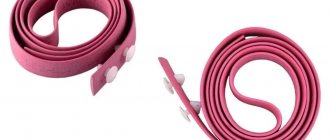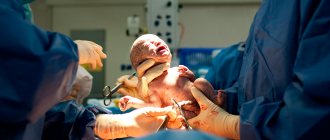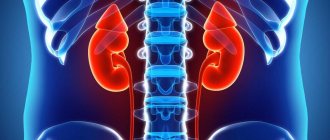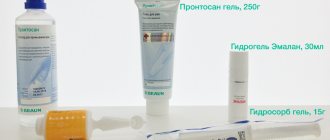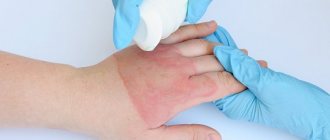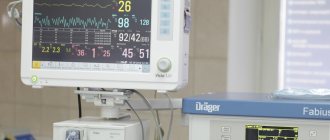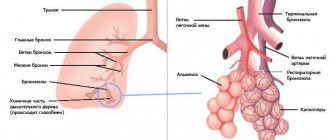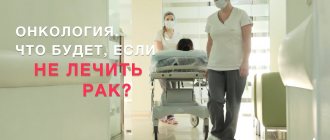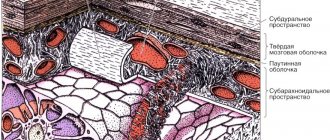Damage to the skin, muscle and bone tissue, sprains of ligaments and tendons are not uncommon. Applying a pressure bandage helps to cope with pain, bleeding, and swelling until full medical care is provided, which will prevent complications and create rest for the damaged area.
Despite the fact that a whole science called “desmurgy” is studying this issue, without even going into its terminology and subtleties, every person should have basic skills in handling dressings. What kind?
Classification of dressings
Dressings are classified according to several parameters. According to the purpose of use, the following types of medical dressings are distinguished:
- holding;
- pressing;
- immobilizing;
- occlusive - to seal the wound from exposure to water and air;
- aseptic;
- medicinal - for supplying medicinal substances to the damaged surface;
- corrective - to correct deformities.
Types of dressings vary depending on the material used:
- soft;
- hardening (gypsum and starch);
- hard (tires).
Plastic generation or alternative to conventional plaster
A good alternative to good old plaster is now considered, for example, plastic gypsum. It can also be called artificial or polymer - the essence does not change. This is a special material that the doctor first dips into water and then applies to the broken segment according to a certain pattern. After some time, the bandage dries, fixing the damaged area.
In general, the principle of operation is not very different from the traditional one. However, there are a number of advantages: plastic bandages are 4-5 times lighter than plaster ones - it is much easier to move when wearing them. In terms of strength, they are in no way inferior to plaster, so you don’t have to worry that broken bones will move or heal incorrectly.
Plastic plaster is not afraid of moisture, you can take a shower with it. This bandage also “breathes.” Unlike standard plaster, it allows oxygen to pass through to the skin and, on the contrary, evaporates to the outside. As a result, itching and irritation occur much less frequently.
In addition, plastic plaster looks neater than regular plaster. If you accidentally get it dirty, you can simply wipe the bandage with an important tissue.
However, with all the advantages, this material has its own nuances. A doctor who knows its characteristics should work with this type of plaster, since the material hardens very quickly and self-application of this plaster by the patient is unacceptable! And in some cases it is even dangerous. In addition, removing an artificial bandage is more difficult than a traditional one. You cannot cut artificial plaster with scissors—special tools are required. Our clinic has quite experienced doctors, so applying a plastic plaster cast, after consulting a doctor, will not take much time.
Basic rules for applying bandages
The ability to apply a simple bandage can be useful to everyone, so you should know the basic rules and techniques used when applying different types of bandages:
- do not touch the wound with your hands;
- use sterile dressing material;
- carry out the dressing facing the victim in order to understand whether the manipulation does not cause unnecessary pain;
- bandage from bottom to top and from the periphery to the center;
- roll out the bandage without removing it from the body;
- bandage the limb in a position comfortable for the victim: legs straight, arms slightly bent.
In this case, the bandage should be moderately tight so that it does not interfere with normal blood circulation and does not move out.
How are they applied?
The application of a polymer dressing instead of a plaster should be provided by a physician. In addition to the product itself, you will need:
- Lining underneath. Typically, roll or stocking wool is used. Important! In some cases, it is prohibited to use stocking stuffers! Rolled cotton wool is usually used for limb injuries. It is permissible to combine materials for lining
- Warm water. Its temperature should vary from +20 to +25 degrees
- Disposable rubber gloves. They are required to protect the skin from the special impregnation of the bandage.
The process of applying a polymer bandage, like a standard plaster bandage, for fractures and other injuries is step-by-step.
- The doctor puts on gloves and removes the pads from the packaging. A bandage (roll) is wrapped around the area that needs to be immobilized. The stocking lining is placed on the limb. The excess is immediately cut off
- The bandage is dipped into a previously prepared bowl of water. In this case, the roll is compressed several times. This allows the product to absorb a sufficient amount of water.
- The bandage is removed from the water and applied to the damaged part of the body using spiral movements (as with the standard method). Important! Each subsequent turn necessarily overlaps the previous one by about ½ of the width
Fixation of the polymer bandage is ensured within 3-5 minutes. Important! During this time, the doctor can continue modeling the material for maximum reliability and comfort for the patient. Hardening of the material requires approximately 20 more minutes.
Thus, the entire procedure takes approximately half an hour. It does not cause significant discomfort to the patient.
Application techniques depending on the type of dressing used and the place of its application
The technique of applying bandages for different parts of the body is different and depends on what type of medical bandage is used.
For head injuries
What bandage is used to provide first aid for a head injury? There are several varieties:
- the frenulum is applied to the parietal and occipital parts;
- the cap and cap of Hippocrates cover the entire scalp;
- a figure-of-eight monocular or binocular bandage is used for eye injuries;
- A sling bandage is used for injuries to the facial part of the head.
For limb injuries
When applying bandages to limbs, it is especially important to adhere to the rule of bandaging in the direction from bottom to top. This technique will prevent the accumulation of venous blood in the unligated parts of the limb.
A reliable spica bandage is used to bandage the shoulder and hip joints. A figure-eight bandage is applied to the elbow and knee joints. The lower leg, shoulder, forearm and thigh are bandaged in a spiral or spicate manner.
Which bandage is used depends on the degree of load.
Pressure bandage and tourniquet
A pressure bandage is used for minor bleeding of a capillary or venous nature, as well as for violation of the integrity of small arteries. It can be left on the body until the victim is admitted to a medical facility.
A tourniquet is used for bleeding from large arteries. It should not remain on the body for more than 1 hour in the cold season and more than 2 hours in the warm months.
Immobilization splint
When applying an immobilizing splint bandage to the limbs, you should adhere to the basic rule - grab the joints above and below the injury site, except in cases of hip and shoulder fractures, when the entire limb is fixed at three points.
In areas of bony protrusions, the splint is lined with soft material to prevent the formation of bedsores and abrasions.
Any damage to the skin, be it a postoperative wound or an ordinary cut, must be protected from the penetration of pathogenic bacteria. Today, standard bandages and gauze cuts have been replaced by modern bandages-plasters. They not only conveniently attach to the skin, but also effectively protect the wound from infections, promoting its speedy healing.
Among adhesive-type dressings, there are 2 main types:
- bactericidal,
- adsorbent.
With the help of adhesive bandages, post-burn and post-operative wounds, trophic ulcers and bedsores, and other skin lesions that require healing are quickly and easily regenerated. The composition of the wound plaster is quite simple: in the middle of the base made of non-woven fabric with an adhesive layer there is an absorbent pad. Thanks to innovative “breathable” materials, the epidermis under the bandage is quickly and efficiently regenerated. Changing dressings does not cause any inconvenience - the hypoallergenic base easily separates from the skin without leaving marks or sticking to the wound.
At the first stage of healing, when exudate is actively released from the wound, absorbent dressings come to the rescue. For some types of wounds, it is not advisable to change patches frequently. In these cases, superabsorbent dressings are used. The sorption capacity of these dressings is such that the patch can retain a large amount of wound discharge for a long time without harming the affected surface. The gel filler contained in the pad effectively absorbs exudate, preventing its secondary contact with the wound and the possibility of infection.
As healing progresses, when the amount of discharge decreases, the newly formed tissues have a high risk of secondary traumatization. This is why it is important to maintain a moist environment under the bandage during the next stage of healing. Moisture is necessary so that the skin does not dry out, is restored without the formation of rough scars and is protected from external influences. Plaster-type bactericidal dressings based on non-woven material or polyurethane film effectively cope with such tasks.
For postoperative wounds and for injuries that have caused deep damage to the skin, bandages are applied in hospitals or clinics. For small, low-traumatic wounds, bandages-plasters can be easily used at home. To do this, simply remove the product from the individual packaging, remove the protective film from the inside and carefully apply it to the wound, combining it with the absorbent pad.
Maybe you'll like it
Bactericidal patch-type dressings
Patch-type bactericidal dressings on a polyurethane and waterproof base
Adhesive-type dressings with superabsorbent
Wound dressing Vilovond POVI Pad
Compression bandages
They are widely used for diseases of the veins of the lower extremities. When applying such a bandage, it is important to follow the rule of gradually reducing the degree of compression from the foot to the knee. There should be no numbness in your fingers. The patient should feel the effect of a tight-fitting boot.
The self-fixing medium-stretch ones - PÜTTERBINDE® (“Pütterbint”) and the long-stretch Lastodur® straff (“Lastodur tight”) from HARTMANN are very convenient to use. They vary in size and degree of elasticity.
Advantages of contacting MEDSI
- Use of modern materials.
They allow you to shorten the rehabilitation period and quickly restore the patient to full activity. The bandages are lightweight but provide a secure hold. Moreover, they are easy to apply and remove. These procedures do not require special tools. In addition, the products do not cause irritation or itching. They are as comfortable as possible and can be used without problems even by small children. - Experienced doctors.
Our specialists will select the appropriate option for fixing the damaged area. In this case, traumatologists take into account the severity of the injury and other factors. - Opportunities to receive the necessary assistance as soon as possible
- Convenient location of MEDSI clinics near the metro station
- Opportunities for pre-booking appointments
- No queues.
When you contact the clinic, you won’t have to wait long for help.
To clarify the conditions for applying polymer dressings for fractures and other injuries or to make an appointment, just call +7 (495) 7-800-500. Our specialist will answer all questions. Recording is also possible through the SmartMed application.
Occlusive dressings
They have unique properties: they accelerate the process of epithelization of wounds, improve tissue granulation even in the case of chronic ulcers, and protect the skin from environmental influences. They have found their use in military field surgery for penetrating lung wounds, as well as in dermatology, where they are used to enhance the effect of medicinal drugs.
If you need help choosing, our specialists will advise you online or by phone and tell you the name of the bandage you are looking for.
Pros and cons of polymer dressings
The main advantages of plastic products include:
- High fixation speed and ease of modeling. You can fix the bandage or change it in just 30 minutes. Since the product can take any shape, it can be fixed even in hard-to-reach areas
- High fastening strength. The material can be used throughout the recovery period. At the same time, it will provide a high level of immobilization of a certain area
- Resistance to moisture. If it is almost impossible to take a bath in a standard plaster cast, then even swimming in a pool is allowed in a polymer cast.
- Safety. The product does not cause diaper rash on the skin, rashes, irritation or inflammation.
- Possibility for radiography and other examinations. With a polymer dressing, it is allowed to perform both standard X-ray examination and computed tomography, as well as magnetic resonance imaging
- Several color options. This advantage is especially important for children and teenagers who want to emphasize their individuality
Unfortunately, such products also have some disadvantages. At the moment, they have not become a full-fledged replacement for gypsum for a number of reasons. The main reason is their high cost. In addition, it is important to consider the fact that even the hardest polymers are softer than gypsum.
For this reason, products are not used for complex displaced fractures. If the doctor sets the bone, a more rigid fixation should be achieved, which is only possible with the use of plaster. It is also possible to use metal stiffeners, but, unfortunately, they are not available in all clinics.
Functionality and versatility
Functional treatment of fractures with a shortened plaster cast is an original method that has been used for a long time. But it requires a certain qualification from the doctor; in our clinic we quite widely use this method of casting on different parts of the body for fractures. Most often it is used for fractures of the ankle, radius, metacarpal, and metatarsal bones. The bandage in this case can be made from either ordinary plaster or plastic, or modeling hard and soft plastic plaster at the same time. But they apply it in a special way.
Traditionally, traumatologists try to fix the damaged area as firmly as possible. For example, when a tibia is fractured, a bandage is often applied from the knee to the toes. In functional treatment, the doctor acts differently: a very small area directly above the fracture is placed in the cast. The nearby joints remain free.
